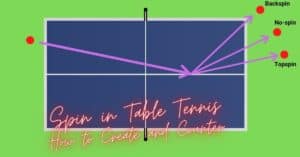“Doubles in table tennis” is mainly popular among amateurs in clubs, homes, recreational centers, parks, malls, and offices. Basic knowledge regarding the rules for doubles in table tennis is necessary to play the game in friendly weather without any type of conflict.
The previous article “Table Tennis Rules for Singles and Doubles Game” depicts an overall presentation regarding the rules, whereas this article is specifically designed to present the doubles rules in an elaborate manner.
In table tennis, a doubles match is played between two teams consisting of 2 players each.
Like in singles, the fundamental rules governed by ITTF (International Table Tennis Federation) are the same in doubles:
- You or your partner must hit the ball only after the first bounce on your side of the table, centrally divided by a net. It is not allowed to volley the ball like in tennis and also not allowed to hit the ball after bouncing twice.
- For correct serve, the first drop of the ball must land on your side and the next bounce must land on the opponent’s side of the table after crossing over the net.
- The rotation of serves between each team happens after 2 consecutive serves by either of the teams.
- At 10-10 (deuce), the service alternates between each team after every point.
- If the opponent team is unable to return the ball either by hitting outside of the table or by dashing the ball against the net and falling on his side, your team wins 1 point.
- A total of 11 points is required to win a set, if not equality arrives at 10-10 (called a deuce).
- If a situation of deuce occurs, a lead by 2 points is necessary to win the set.
- A match consists of 3, 5, or 7 sets.
Rules for Doubles in Table Tennis
Now, there are some vital differences between singles and doubles for which it is essential to know the rules for doubles in table tennis.
Serve
There are two important considerations that you have to keep in mind while playing doubles.
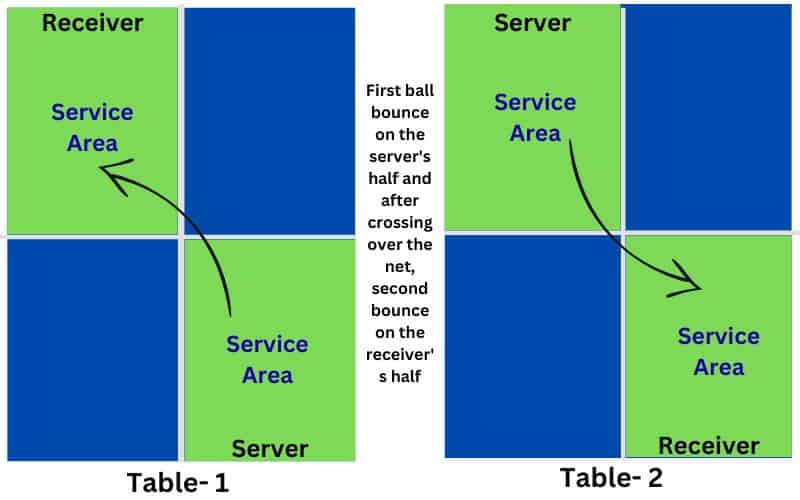
- The ball must bounce on the right half of your table and after crossing over the net, the ball must land on the right half of your opponent’s table.
- After 2 consecutive serves, the receiver becomes the server and the partner of the server becomes the receiver.
Let’s illustrate these vital rules with an example.
Suppose there is a doubles match between Team 1 and Team 2.
Team 1 has a pairing of players A and B
Team 2 has a pairing of players C and D
Now after winning the toss, Team 1 takes the first serve, and Player A has the chance to serve while Player C of Team 2 is nominated to receive the serve.
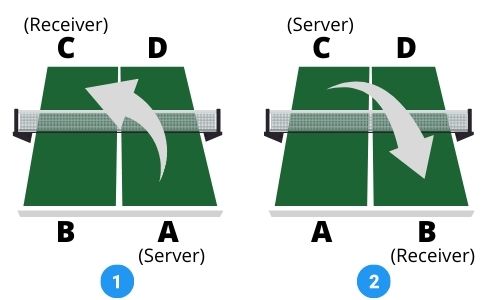
Points 1 & 2 (Picture 1)
A serves to C (from the right half of A to the right half of C)
Points 3 & 4 (Picture 2)
C serves to B (from the right half of C to the right half of B)
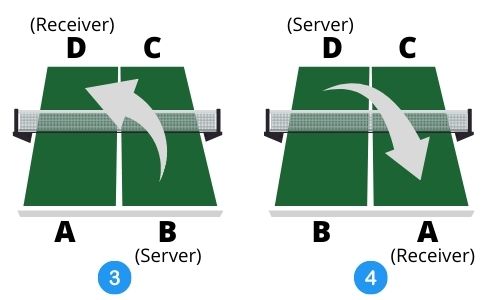
Points 5 & 6 (Picture 3)
B serves to D (from the right half of B to the right half of D)
Points 7 & 8 (Picture 4)
D serves to A (from the right half of D to the right half of A)
Note: The serving and receiving pairs remain the same during the game. Considering the above example, in that game,
A (Server)→ C (receiver)
C (Server)→ B (receiver)
B (Server)→ D (receiver)
D (Server)→ A (receiver)
The above serving and receiving order remains the same during the whole game.
Order of Play
What are the doubles rules in table tennis regarding the order of play?
The simple rule is that no player can take 2 consecutive hits.
Let’s continue with the previous example.
| Point 1 Suppose player A delivers a valid serve and receiver C successfully returns the ball. So the rally will continue as the under-mentioned sequence of returns until any of the players commits a mistake. Player B (Team 1) ↓ Player D (Team 2) ↓ Player A (Team 1) ↓ Player C (Team 2) ↓ Player B (Team 1) and so on until any player commits a mistake. |
Change of Ends
The change of ends occurs after the end of each game and also in the deciding set after either of the teams scores a total of 5 points.
In the next game, the receiver team becomes the server and vice versa. The team who is due to serve in the next game has the opportunity to select the player who will serve first. The reverse serving sequence will decide the receiver for the first 2 points.
Considering the above example, if player C of Team 2 is selected to serve first, by reverse sequencing, A will be the receiver for the first 2 points.
When any of the teams first scores 5 points in the final set (5th set when the match is tied at 2-2), there is a changeover of sides and receiver. The partner of the previous receiver becomes the new receiver. Suppose A is the server and C is the receiver before the changeover. So after the changeover of sides, If A remains the server, D is the receiver and if C is the new server, B becomes the receiver.
Some Simple Strategies to Play Doubles in Table Tennis
- Coordination and understanding are the keys to doing better in doubles. It has been often observed that a relatively weaker team that has better coordination between players, ends the match on a winning note.
- You should know your partner’s strengths and weaknesses. So try to play the ball in such a manner, so that your opponent is forced to give a return on your partner’s favorite side.
- Always try to attack the weaker player between the two. Another good tactic is to target the body of the returner to restrain his teammate from making a shot.
- Give space to your partner after committing your shots and promptly return to the ready position just after the return of your partner.
- Communicate with your partner by hand signaling the type of service that you are going to deliver so that your partner can predict the return of the opponent team.
- Try to be more aggressive, if your partner is not as good as you. In reverse, try to give as many returns as possible so that your partner gets the opportunity to finish the point on a winning note.
Frequently Asked Questions
1. What are the rules in table tennis while playing doubles when the ball lands on the centerline while serving?
In doubles, the service must go diagonally, from your right half to your opponent’s right half. If the ball lands on the centerline, it is a valid serve.
2. What happens when the ball lands on the white sideline in table tennis?
Landing on the line is fair, but if the ball touches the vertical side of the table, it is a wrong service.
3. If is there any “Double fault” in table tennis?
No, there is no “Double fault” in table tennis. If it is a “let” (if the ball touches the net but lands right) serve, you have the opportunity to do as many serves as you can. “Double fault” is considered only in tennis.
Also Read:
